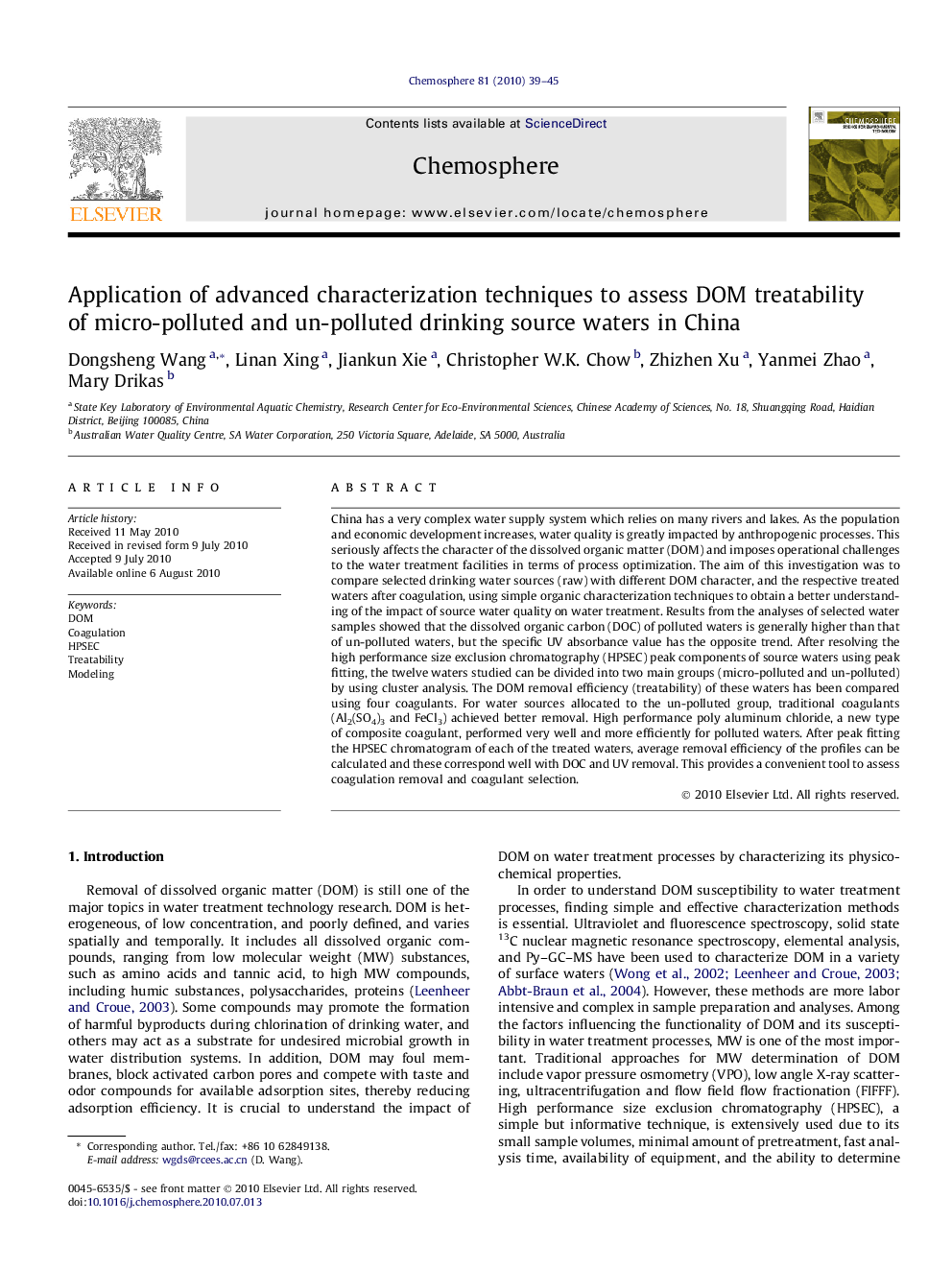| Article ID | Journal | Published Year | Pages | File Type |
|---|---|---|---|---|
| 4411915 | Chemosphere | 2010 | 7 Pages |
Abstract
China has a very complex water supply system which relies on many rivers and lakes. As the population and economic development increases, water quality is greatly impacted by anthropogenic processes. This seriously affects the character of the dissolved organic matter (DOM) and imposes operational challenges to the water treatment facilities in terms of process optimization. The aim of this investigation was to compare selected drinking water sources (raw) with different DOM character, and the respective treated waters after coagulation, using simple organic characterization techniques to obtain a better understanding of the impact of source water quality on water treatment. Results from the analyses of selected water samples showed that the dissolved organic carbon (DOC) of polluted waters is generally higher than that of un-polluted waters, but the specific UV absorbance value has the opposite trend. After resolving the high performance size exclusion chromatography (HPSEC) peak components of source waters using peak fitting, the twelve waters studied can be divided into two main groups (micro-polluted and un-polluted) by using cluster analysis. The DOM removal efficiency (treatability) of these waters has been compared using four coagulants. For water sources allocated to the un-polluted group, traditional coagulants (Al2(SO4)3 and FeCl3) achieved better removal. High performance poly aluminum chloride, a new type of composite coagulant, performed very well and more efficiently for polluted waters. After peak fitting the HPSEC chromatogram of each of the treated waters, average removal efficiency of the profiles can be calculated and these correspond well with DOC and UV removal. This provides a convenient tool to assess coagulation removal and coagulant selection.
Related Topics
Life Sciences
Environmental Science
Environmental Chemistry
Authors
Dongsheng Wang, Linan Xing, Jiankun Xie, Christopher W.K. Chow, Zhizhen Xu, Yanmei Zhao, Mary Drikas,
